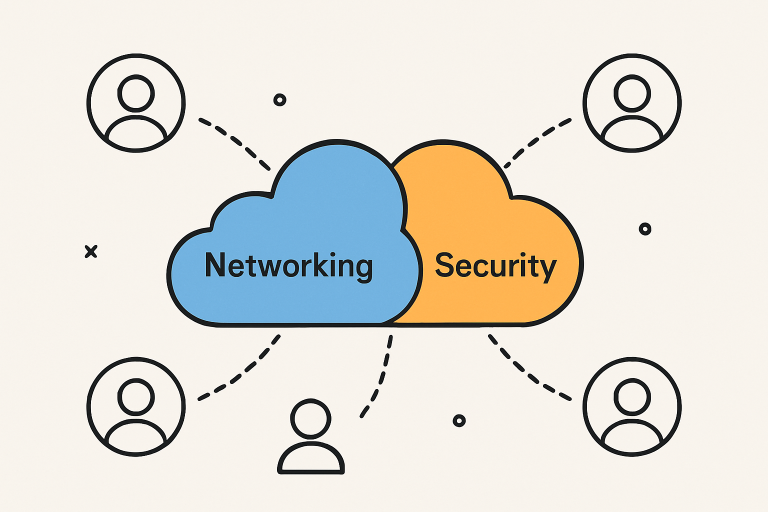Building Better Business Networks With SASE
Key Takeaways:
- Secure Access Service Edge (SASE) integrates networking and security into a unified, cloud-native service.
- SASE enhances scalability, supports remote workforces, and simplifies network management.
- Implementing SASE can lead to improved security posture and optimized application performance.
The demand for seamless integration between networking and security is at an all-time high as organizations continue their digital transformation journey. Secure Access Service Edge (SASE) stands out as an innovative model, combining wide-area networking (WAN) with advanced security functions in a unified, cloud-native architecture. By converging these previously siloed technologies, SASE equips enterprises to meet complex connectivity requirements and rising cybersecurity threats in a holistic manner. As organizations evaluate their future networking needs, it is crucial to consider solutions offered by the best SASE provider to maximize both protection and performance.
SASE not only addresses technical challenges but also streamlines network management by delivering scalable, cloud-delivered networking and security. In this article, we will examine the key factors that distinguish SASE in the evolving world of business networks, including its scalability, adaptability for remote teams, and enhanced application efficiency. Adopting SASE enables IT leaders to build networks that are secure by design while remaining agile enough to support ongoing business growth.
Enterprises facing an increasingly complex risk landscape can benefit from SASE’s unified strategy, which combines robust security features with modern network agility. This convergence is critical as companies look to centralize management, optimize their networks, and guard against ever-evolving cyber threats in an era of distributed workforces.
Furthermore, organizations that make the switch to SASE gain access to a cloud-centric framework designed to adapt flexibly to their operational needs. This alignment between IT goals and business objectives positions SASE as a cornerstone technology for forward-thinking companies.
Scalability and Flexibility
SASE’s architecture is engineered for scalability, allowing businesses to easily accommodate new users, locations, and applications as they grow. Unlike legacy network models, which require significant hardware investments or extensive on-site configuration, SASE delivers scalability directly through the cloud. This ensures organizations can respond rapidly to business changes and fluctuating workloads without incurring excessive costs or complexity. As digital services expand, this elasticity helps businesses stay competitive and resilient.
Flexibility is another key advantage, as SASE enables centralized control and visibility, regardless of how dispersed the enterprise becomes. Whether scaling up remote offices or adding new cloud apps, IT admins can extend security coverage and access control seamlessly—eliminating the patchwork of standalone solutions that often lead to inconsistencies and vulnerabilities.

Supporting Remote and Hybrid Workforces
The ongoing shift to remote and hybrid work arrangements has highlighted the importance of secure, reliable access to corporate applications and data from virtually anywhere. SASE frameworks address this by integrating identity-driven controls, continuous authentication, and policy enforcement regardless of the user’s location. This not only strengthens security but also ensures a frictionless user experience for distributed teams.
SASE’s zero trust principles ensure that every access request is thoroughly validated and monitored, reducing the risk of unauthorized access and lateral movement by potential attackers. By bridging the gap between security and connectivity, SASE empowers organizations to provide consistent access and robust protection for all users, whether they are on-premises, on the road, or working from home.
Centralized Policy Management
One of the strongest appeals of SASE is unified policy management through a single cloud dashboard. This centralized governance model simplifies oversight of network traffic, user activity, and real-time threats, allowing IT teams to enforce organizational policies with precision and agility. By consolidating policy creation and enforcement, SASE reduces administrative burdens and minimizes configuration errors.
Centralized management also streamlines compliance with industry regulations, as organizations can quickly adapt to new standards or requirements from a single point of control. Swift response to threats and policy updates is critical in today’s dynamic security landscape, and SASE provides the oversight necessary for proactive risk management.
Enhanced Security with Zero Trust
At the center of Secure Access Service Edge (SASE) is the Zero Trust security framework, which emphasizes access based on continuously verified user identity and context rather than network location. Each access request undergoes rigorous authentication and authorization, significantly reducing the attack surface and preventing unauthorized lateral movement within the network. The combination of Zero Trust, integrated threat prevention, and real-time security analytics creates a formidable defense against sophisticated cyber threats. SASE’s approach, which enforces least-privilege access and monitors for anomalies, stands in contrast to traditional perimeter-based defenses, allowing for adaptive policy changes in response to evolving risks and aligning security measures with the modern threat landscape.
Optimized Application Performance
Application performance can directly affect productivity and user satisfaction. SASE leverages SD-WAN technology for intelligent traffic routing, optimizing bandwidth, and prioritizing mission-critical applications. This reduces network latency, mitigates congestion, and ensures consistent performance for both remote and mobile users.
By deploying SASE, IT teams gain granular control over network traffic, enabling continuous adjustment and optimization based on real-time conditions. As organizations rely increasingly on SaaS solutions and cloud-based workloads, SASE keeps enterprise networks agile and responsive, supporting both legacy applications and emerging technologies.
Real-World Implementations
Organizations across sectors have realized tangible benefits from integrating SASE solutions. For example, MetTel’s partnership with VMware delivers a unified SASE offering that helps enterprises streamline their security and network management under one platform. Similarly, MetTel has been recognized as a leader in the Gartner Magic Quadrant for Managed Network Services, underscoring its commitment to providing comprehensive SASE solutions. These examples highlight the broad applicability and proven impact of SASE in real-world settings.
Conclusion
SASE provides an essential roadmap for organizations seeking to unify their networking and security infrastructures in a scalable, cloud-driven environment. Its unique blend of centralized management, zero trust protection, and optimized performance positions businesses to securely support growing, flexible teams and rapidly changing technologies. By investing in SASE, forward-thinking companies are building resilient, future-ready networks that can meet the demands of a rapidly evolving digital world.



